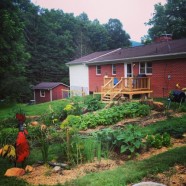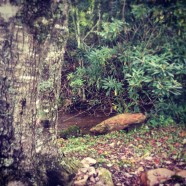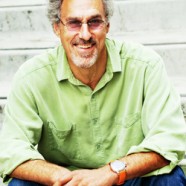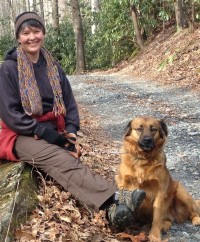The veggie garden: Year One
Take “before” pictures! This is the advice I give to anyone buying a house or starting a garden or homeplace. When you are working on it day by day, it’s very easy to forget how far you’ve come. There is a deep satisfaction in looking at the spot that inspired the garden (or plantings or pond), then seeing the realized vision (or a step toward it) in a photo. It’s as if your handiwork stepped right out of your imagination and into the world! We all know that’s not how it happened. Still, before and after images celebrate your creative work.
Read MoreGood Link: Scouting for Microclimates by Ruth Gonzalez
You’ve heard me talk microclimates here at Larrapin Garden Blog before! This is a great article by Western North Carolina gardener Ruth Gonzalez on how to read the microclimates on your land. Winter is a great time to find out both about the chilly and warm spots on your land or in your garden…
Trees in a cloud at Five Apple
Our homestead is at about 3000′ elevation in the Blue Ridge. Some days the clouds roll right onto the land and create a quiet dreamscape.
Read MoreNew Roots of Louisville: A nonprofit model that helps families AND farmers!
While New Roots of Louisville tied for second place at the Slow Money 2014 conference showcase, this organization’s approach and innovative model won me over by a country mile.
After my post last week about the event and how impressed I was at all the entrepreneurs giving business a good name, I was a little surprised that my personal favorite is a nonprofit. But when a nonprofit manages to solve problems in the community while also helping local farmers earn a fair living—you have my attention and unending respect. This organization rocks! Best of all, they are teaching other communities how to do the same.
Read MoreSlow Money 2014 — First Impressions
Slow Money founder Woody Tasch started off the 2014 conference with three questions:
—What if we invested 50% of our money within 50 miles of our home?
—What if there were a new generation of businesses that gave away 50% of their profit
—What if there were 50% more organic matter in our soils 50 years from now?
At first they might seem an odd assemblage of questions. The first makes sense given Slow Money seems to be, from my first foray into it, focused on investors large and small, turning their attention and money to local farm and food-based biz. Which makes sense as Slow Money seems to have arisen from Slow Food, the organization that champions unique regional tastes as well as the idea of slowing down and returning food to the nurturing, relationship and community building role it has played in human history till lately.
Read More







